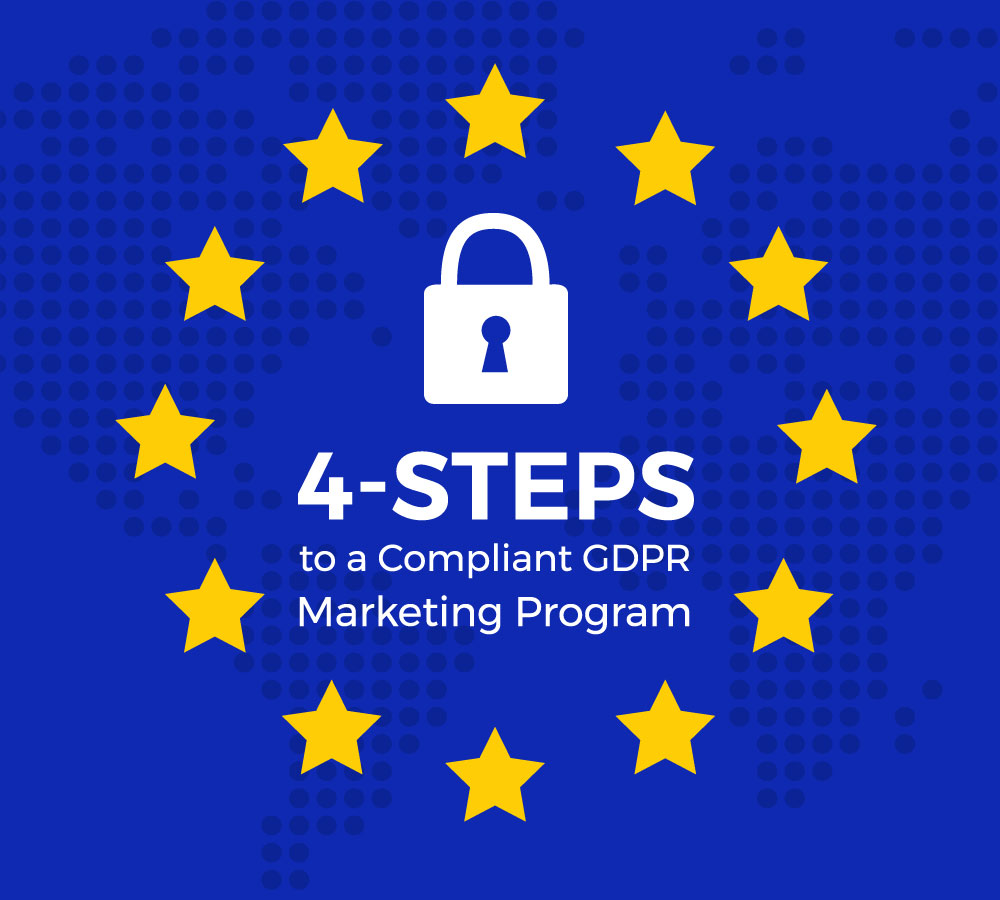The European Union’s GDPR went into effect on May 25, 2018 – sending the entire digital marketing world into a frenzy. Marketers everywhere are now asking themselves one pressing question, “Does this apply to me, even if my company is not based in the EU?” In today’s global economy, the answer is undoubtedly “yes” – it affects us all.
So, as you brace yourself for the still unknown implications of GDPR, here is a 4-Step GDPR Marketing Guide to ensure your compliance and general happiness as a digital marketer.
Step 1: Segment your customer database.
To paraphrase the Bard, “to opt in or not to opt in,” that is the question. And it’s a question that too many of us marketers have been ignoring for too long. Now, thanks to GDPR, we know the answer must be “opt-in” – all the time. Fortunately, since our contacts can now only receive e-communications if they have opted-in, we are forced to segment our database to only include those contacts truly interested in hearing from us. By doing so, our database will become a lot more effective.
Step 2: Install a cookie consent form.
As digital marketers, we also have a special relationship with cookies. Just like when we eat real cookies, digital cookies make us happy. They help us understand how people are interacting with our site and they assist in predicting behaviors. As of May 25, we now have to receive explicit consent from website users to truly enjoy these wonderful cookies. Working with a web developer to install a cookie consent form or choosing a consent widget tool to place on your website will help you ensure you’re compliant on this front as well.
Here’s a list of cookie consent form tools you can use on your site:
Step 3: Uncheck the pre-checked opt-in boxes on all your web forms.
The pre-checked opt-in boxes on web forms – the yin to email marketing’s yang – are no more. Marketers must now receive explicit consent to contact users via email. Users can provide this consent by checking an opt-in box that clearly states that the user will receive future communications. It’s important to note that, prior to GDPR, opt-in boxes could be pre-checked. Following GDPR, boxes must default to un-checked, requiring users to check the box to opt-in.
Step 4: Seek legal counsel.
As more information pours in on what is GDPR compliant and what is not, seeking legal advice is the best way to ensure you are interpreting the many clauses appropriately. For example, there’s the question about “Legitimate Interest.” How can you prove that the person in your database is legitimately interested in your product or service and does this justify sending them communication without a formal “opt-in?” With there still being a lot of grey area surrounding these topics, seeking legal counsel is a must.
Although all the answers and implications associated with GDPR are unknown, this guide will help ensure you’re in a better position to be in digital marketing compliance. So, go out there and market with confidence, making GDPR work with you and not against you.
This post was first featured on TrefoilGroup.com.

